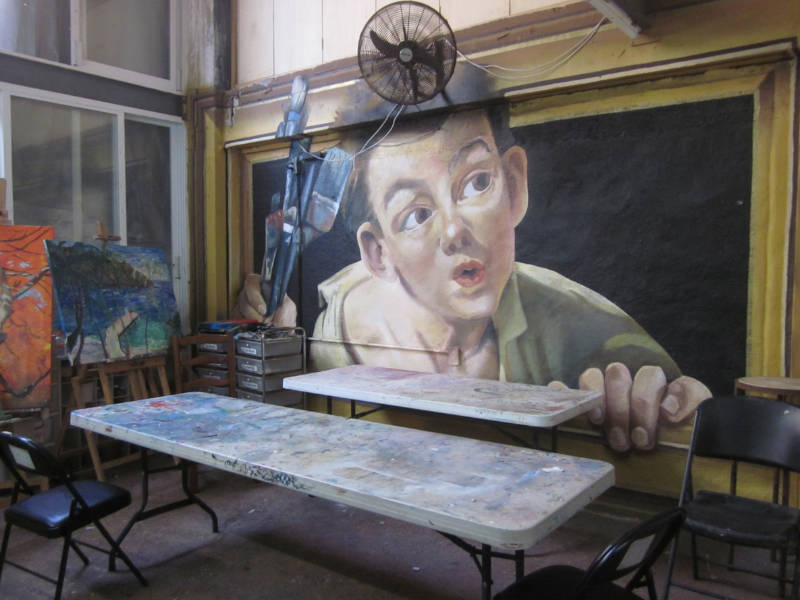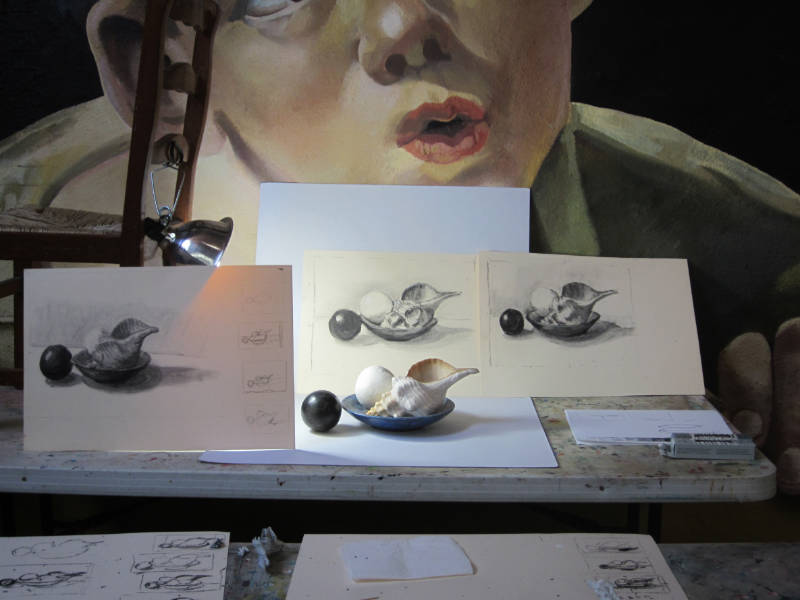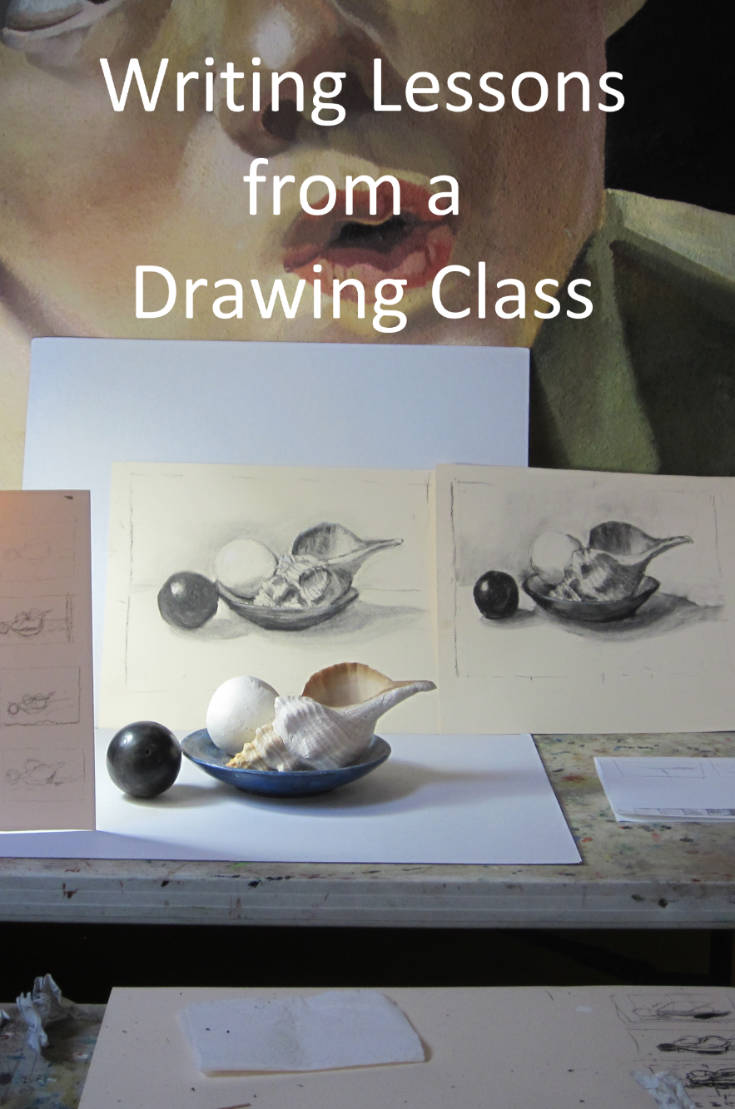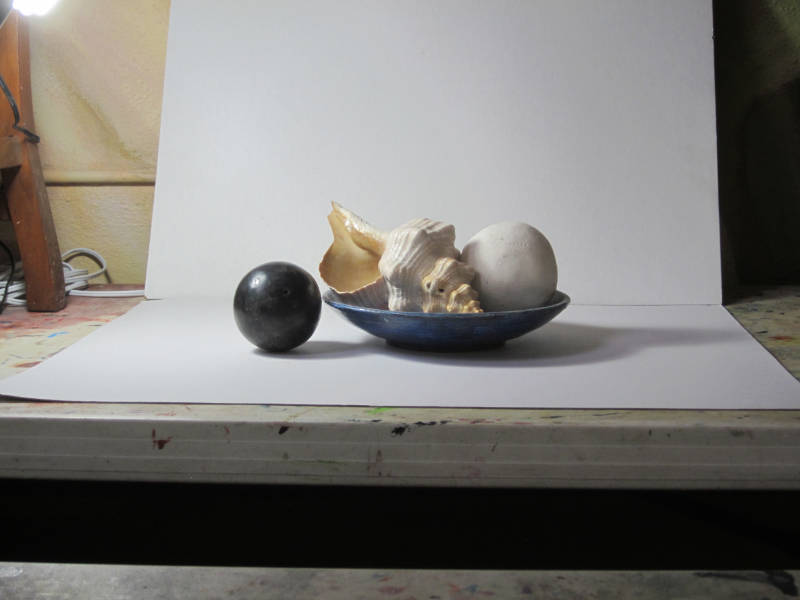I am not a drawer or a painter, but I recently attended a drawing class while vacationing in Puerto Vallarta. It was a three-hour drop-in class offered once a week with no requirement to attend each week. My sister, who was travelling with us, is interested in drawing and I accompanied her to the class.
There were only three of us in the class that day. The instructor created a still life scene with a bowl, a black ball, a white ball, and a seashell. That still life was the model for our charcoal drawings. We drew a few small sketch versions before creating our larger “final” piece.

Getting the proportions right at the beginning was important. We marked off key points in the picture. After that, it was all about seeing and understanding the nuances.
What at first glance seemed like a single shadow created by light over one of the objects was actually a layer of shadows with a darker centre and lighter outer ring. The instructor told us to squint to get a better view of dark versus the light. What I had planned to draw as a series of lines looked like a more solid area of dark when I squinted. The shading mattered more than the individual lines. When it came to portraying the white ball, the secret was not in lighter shading within the ball, but in drawing the darker shadows along the outside of the ball. The white became apparent in contrast to those shadows.
After shading in various parts of my picture, the instructor encouraged me to look for the areas of light, places where the light created spots of white or almost white on the objects. We used an eraser to highlight those areas.
As a writer, I often look for similarities to writing in other forms of art. Thanks to an artist friend, I have learned there are many similarities in the overall creative process.
The key proportion points in drawing are not unlike major plot points in a story. It is the nuances and shading in between those points that creates a compelling narrative. Sometimes the individual lines or details need not be told, but the words need to create an overall sense of the shading. Like drawing the white ball, sometimes important parts of a story are told only by omission, in contrast to what is specifically said. Highlighting different shades of the shadows brings a scene to life.
The more I looked at the still life, the more variations and details I saw. Perhaps a writer needs to examine and re-examine their scenes with persistence and focus to identify both the salient and the obscure details that will transport the reader into the story.
I had not used a charcoal pencil before and struggled to get the right feel and pressure to create various levels of shading. We did not do this in class, but the instructor suggested doing a series of squares from light to dark as a way to understand how to create those levels. Learning technique is important.
I wasn’t sure when to stop. When had I reached a point where I was making the drawing worse by continuing to shade? I’ve experienced similar feelings in writing. When do I stop editing and rewriting?
The instructor made a few significant corrections to my drawing and it wound up looking reasonably presentable. Still, there was one area where I didn’t agree with his way of shading. I wasn’t skilled enough to effectively portray it the way I wanted, but I knew I wanted to highlight it a bit differently.

The three of us in class each had a slightly different view of the still life because of where we were sitting. The angles and shadows in each drawing were different. This was a lesson in perspective. How would the character from whose point of view you are writing see the scene?
My sister attended class the following week. I did not join her. That week, there were seven people in the class. The still life scene included two face masks in addition to a bowl, a black ball and a white ball. The attendees used white pencil to draw the scene on grey paper. Another perspective –drawing white on dark instead of dark on white.
I don’t know if I will attempt drawing again. Like any art or craft, it takes many, many hours to develop skill. But, it was an interesting experience that has left me noticing shadows and shading in real life scenes.
PIN FOR LATER

Donna, I’m so glad that you attended the drawing class. The nuances of light and shadow are a very difficult concept to learn for new artists. The more you really see, the more you learn. I love the way you compared this experience to writing…makes so much sense.
Linda, I too am glad I went. I can understand that the nuances of light and shadow are a difficult concept. Very interesting though.
PS. From what I see, you did very well!
I would love to take a drawing or a painting class. It’s on my perpetual list of things to try, though I know I’m no great shakes when it comes to recreating what I see before me. The connection that exists between various create processes is quite profound, and it always amazes me how various artists create such a wide variety of art forms from a process that has more in common than not with other types of artists.